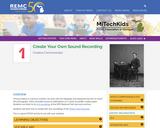
This parent guide supports parents in helping their child at home with the 2nd Grade Social Studies content.
- Subject:
- Social Studies
- Material Type:
- Curriculum
- Reference Material
- Vocabulary
- Author:
- Kelly Rawlston
- Letoria Lewis
- Date Added:
- 03/06/2023

This parent guide supports parents in helping their child at home with the 2nd Grade Social Studies content.

This resource accompanies our Rethink 2nd Grade Social Studies History unit. It includes ideas for use, ways to support exceptional children, ways to extend learning, digital resources and tools, tips for supporting English Language Learners and students with visual and hearing impairments. There are also ideas for offline learning.

This unit was created by the Rethink Education Content Development Team. This course is aligned to the NC Standards for 2nd Grade Social Studies in History.

This site providedes a brief synopsis of each of the forty-four presidents of the United States, from President George Washington to President Barack H. Obama. By clicking on their photograph at the top of the page, students will access their biography. In addition, their major accomplishments are described and various objects related to them are depicted.

Students will learn about the life of Herman Baity. Baity, a native of Iredell County, was an internationally known sanitary engineer. He was a well known teacher at UNC-Chapel Hill and helped develop sanitary protocols across the world.

Students create a news story about a local citizen who exhibits good citizenship.

Students are introduced to the Constitution. They learn how it came into being and how it ensures our freedom. Students look back at the rules they wrote in Unit 1 and relate those to the Constitution. They look at U.S. symbols and begin to learn about customs and celebrations.

Enrich your lessons of North Carolina history and culture by connecting the past to crafts that are easy and fun to make in your classroom. Supply lists and instructions are provided on each page! Make copies as needed for your students and share accompanying histories to add meaning to the activities. This resource's link takes you to a very short form that gives you free downloadable access to the complete PDF book.

Thomas Edison is a famous inventor. His work with the telegraph and telephone led him to invent the phonograph, which recorded sound as indentations on a sheet of paraffin-coated paper. Students can listen to his first recordings at the NPS (National Park Services) archives. Students will learn how to create their own recordings at the Online Voice Recorder.

In this lesson, students summarize biographies of leaders, including Abraham Lincoln, Harriet Tubman, Sojourner Truth, Rosa Parks, Frederick Douglass, Ida B. Wells, Lydia Maria Child, William Lloyd Garrison, Claudette Colvin, and Martin Luther King, Jr.

Objectives for Learners: Students will: 1. Study the early life and innovations of Benjamin Franklin using a variety of media (autobiography, biographies, Internet web sites, condensed history or display boards, dramatic presentation); 2. Prepare written answers to selected Introductory Questions based upon their individual or shared research.

Students will explore George Washington's portrait in detail, from three very different vantage points: the symbolic, the biographic, and the artistic.

In this lesson students are introduced to the Constitution. They learn how it came into being and how it ensures our freedom. Students look back at the rules they wrote in Unit 1 and relate those to the Constitution. They look at U.S. symbols and begin to learn about customs and celebrations.

In this lesson, students create a news story about a local citizen who exhibits good citizenship.

The lesson addresses how the community is impacted by innovators like George Washington Carver. Students examine the life of George Washington Carver and other innovators including those in the local community to learn about and use problem-solving skills and imagine themselves as problem-solvers and innovators.

The lesson looks more closely at how scientific and technological innovations have changed the way people meet their needs in communities. Robert Fulton is used as an example of an innovator in this lesson that focuses on changes in transportation.

Students will examine an historical newspaper, a piece of historical fiction, and their social studies textbooks for accounts of the civil rights movement, and then define 'equality' and 'discrimination'. They will then use these definitions to look for instances of equality and discrimination in modern society.

This resource provides a brief story, with photographs, of Helen Keller. It cites her accomplishments and celebrates her advocacy for social justice for people with disabilities.

Students will study a variety of historical figures and specifically focus on one person to understand more about his/her life.

The lesson addresses how the community is impacted by innovators like George Washington Carver. Students examine the life of George Washington Carver and other innovators including those in the local community to learn about and use problem-solving skills and imagine themselves as problem-solvers and innovators.